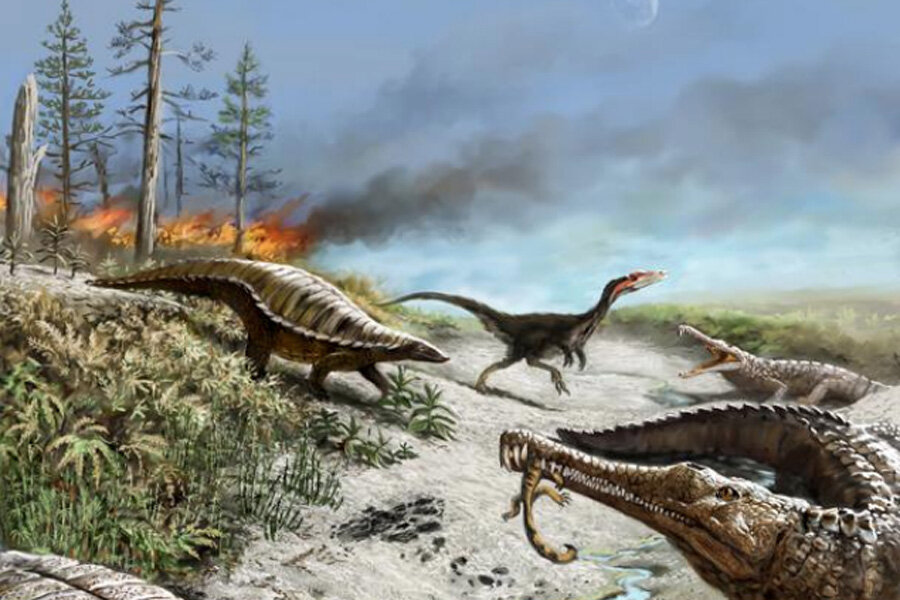What made large dinosaurs flee the tropics?
Loading...
The tropics may be attractive to today’s vacationing North Americans, but the continent’s former inhabitants tended to steer clear.
In the mid-Triassic period, long before they became Earth’s dominant creatures, dinosaurs began their diffusion across Pangea. They settled on the north and south ends of the supercontinent – but for millions of years, virtually none settled near the equator.
After decades of debate, paleontologists may have discovered the explanation for this strange absence: an unstable climate, caused by high levels of carbon dioxide in the atmosphere, would have made low-latitude life all but impossible for large dinosaurs. Their research, which was funded by the National Science Foundation, was published Monday in PNAS.
True dinosaurs first appeared in the middle Triassic period, about 230 million years ago. Some 15 million years later, their larger counterparts – including the herbivorous, long-necked sauropodomorphs – were common on both sides of the equator. But at the famed New Mexico fossil site Ghost Ranch, they don’t appear for another 10-15 million years. At this time, New Mexico was just 12 degrees north of the equator.
“For several decades, researchers noticed [that] large, plant-eating dinosaurs seemed to be much more common at high latitudes during the Triassic,” lead author Jessica Whiteside says. “However, in the past 10 years we’ve realized that they’re completely missing from the tropics, where only a few small carnivorous dinosaurs dwelled.”
In hopes of solving the mystery of the missing dinosaurs, Dr. Whiteside and co-author Randall Irmis took rock samples from Ghost Ranch. By crushing the samples, they were able to separate and count isotopes of oxygen and carbon. From there, they could make inferences about previously unknown variables like climate, plant life, and atmospheric makeup.
Drs. Whiteside and Irmis’ findings suggest that Triassic New Mexico was plagued by levels of carbon dioxide four to six times higher than what we experience today. Wildfires and oppressive heat would have decimated leafy vegetation – the main food source of sauropodomorphs.
“Rapid climate swings, extremes of drought, and intense heat continually reshaped the vegetation available for warm blooded plant-eating dinosaurs, suppressing their ability to live in the low-latitudes for millions of years,” Whiteside, a paleoclimatologist at the University of Southampton, says. “These data suggest there are profound consequences for our modern world if they enter the high CO2 conditions that are predicted to occur in the next 100 years.”
According to Irmis, a vertebrate paleontologist at the Natural History Museum of Utah, this “multi-proxy” study is the first of its kind.
“This is the first really detailed look tying together climate and paleoecology in the Late Triassic of western North America,” Irmis says. “There have been previous related studies from eastern North America where we find early dinosaur footprints, but this is really the first study of its kind from a Triassic site known for its abundant fossil bones of early dinosaurs and other reptiles.”
Irmis says that more interdisciplinary studies – ones that account for plant life, animal life, landscape, and climate – will be necessary to understand the complexities of dinosaur evolution.
“I think it really emphasizes the interplay between climate and dinosaur evolution,” Irmis says. “Our results go to show that the rise of dinosaurs was a multi-faceted event that occurred in several stages, and occurred at different rates in different areas of the supercontinent Pangaea.”








